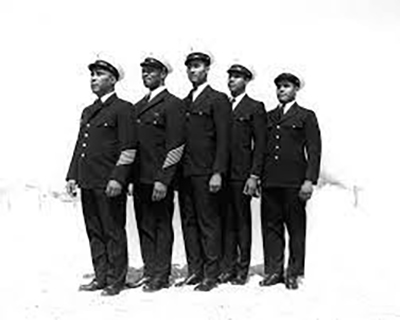
The story of Courage on the Waves highlighting (Jones, 2023) reminds me of the story of the Pea Island Rescue Swimmers. The Life Saving Service is one of American history’s most fascinating and least-known aspects. Old shipwrecks on the coastlines were like plane crashes cause you had scores and scores of people drowning, and now it was time to take a serious look at what to do with the Life Saving Service. By 1900, there were 29 lifesaving stations along the North Carolina coast. This article was inspired by Lacy (2022).
“The officer in charge was called The Keeper. Richard Etheridge stood out. He was born into slavery in 1842 and stayed a leader his whole life. He trained for excellence. He had to do more than the other keepers to hold their heads high. Massive stations and crews were all white, and then you had this one little station on this tiny strip of land where it was all African Americans, and they started having a fantastic record of saving lives, and the rescue occurred. “
“These men were as close to the ultimate hero as you can get, and yet America has somehow forgotten these peaceful heroes such as Richard Etheridge. The U.S. Lifesaving Service was established in 1848 to provide rescue services to all of America’s coasts. The service merged with the U.S. Cutter Service in 1915 to form the U.S. Coast Guard. The lifesavers’’ unofficial motto was, “You have to go out. Still, you do not have to come back.”

“Richard Etheridge, who grew up on the water in Dare County, already came to the Lifesaving Service with some command experience. He had served in the Civil War. Etheridge was promoted to sergeant after the 1864 Chaffin’s Farm fight near Petersburg, Virginia. The skirmish led to the capture of Richmond, the Confederacy’s capital.”
“By 1879, Etheridge had a reputation as one of the best surfmen on the coast. He had worked at the Bodie Island, North Carolina, and Oregon Inlet, North Carolina, lifesaving stations as a surfman — though not in the top leadership position of Keeper. 1880, following recommendation, Etheridge became the first Black Keeper of a U.S. Lifesaving Service station, bringing together the all-Black Pea Island lifesavers, who individually were some of the best Atlantic Coast surfers.”
“At the time, there were 18 stations in North Carolina and 179 in the United States. For the nearly 70 years that followed, Pea Island would be manned by all-Black crews. Etheridge and his men inspired a generation of Black men to join the Coast Guard. Etheridge remained a Keeper at Pea Island Station until he died in 1900. He and his family are buried on the grounds of the North Carolina Aquarium on Roanoke Island, land the family once owned. The Coast Guard named a 110-foot patrol boat after them in homage to the all-Black lifesaving crews. The Pea Island, christened in 1992, was based in Mayport, Florida, serving as a border patrol vehicle.”
References:
Jones, L. (October 23, 2023). Courage on the Waves: The Incredible Rescue Mission by African American Coast Guard Swimmer John Walton – The Narrative MattersLacy, B. (2022). First Wave – CoastwatchCoastwatch (ncsu.edu)
Keywords: Pea Island Rescue, African American Lifesavers, Rescue Swimmers History, Heroic Lifesaving Tales, Pea Island Legacy
#PeaIslandHeroes #RescueLegacy #AfricanAmericanHistory
